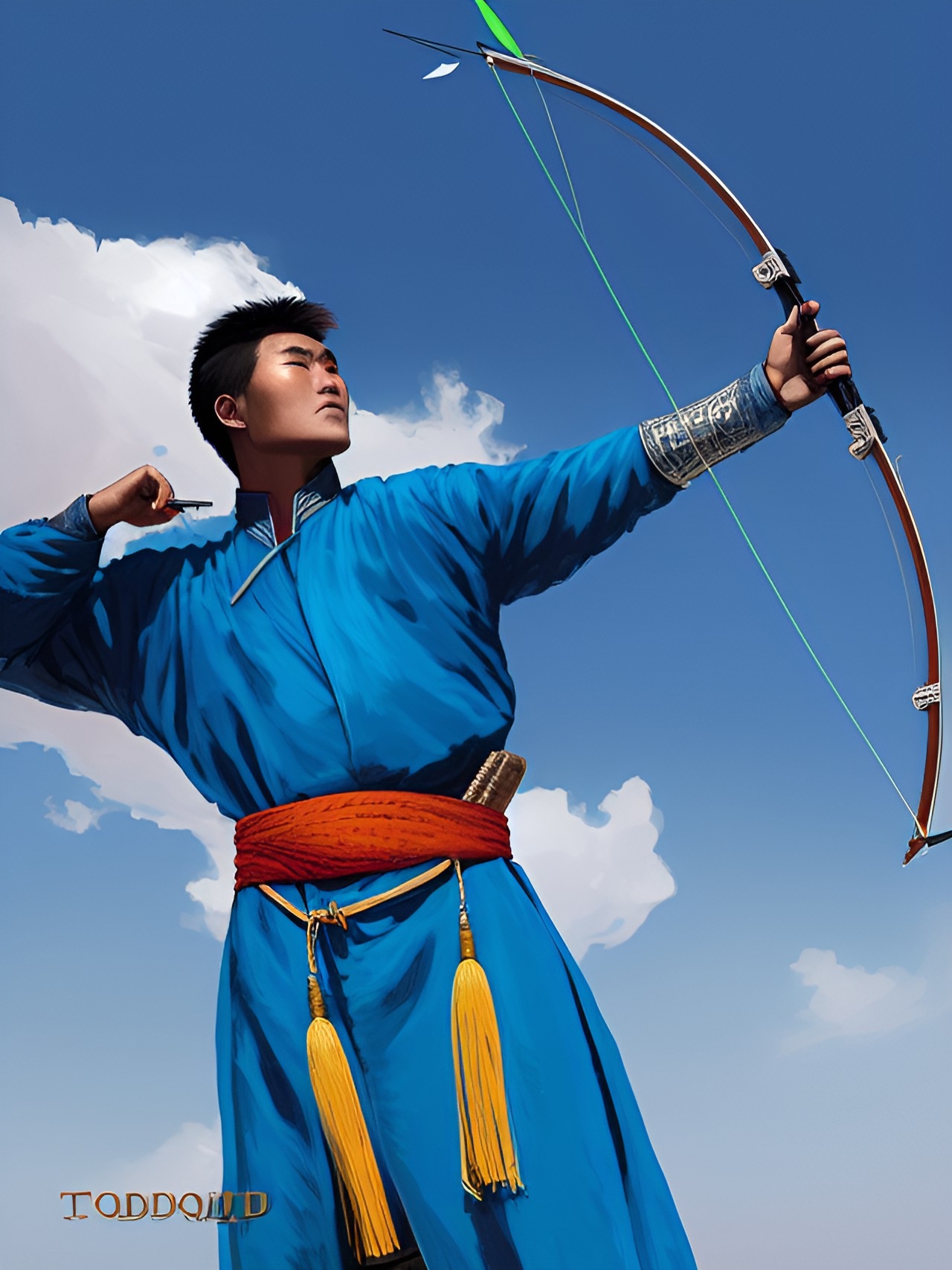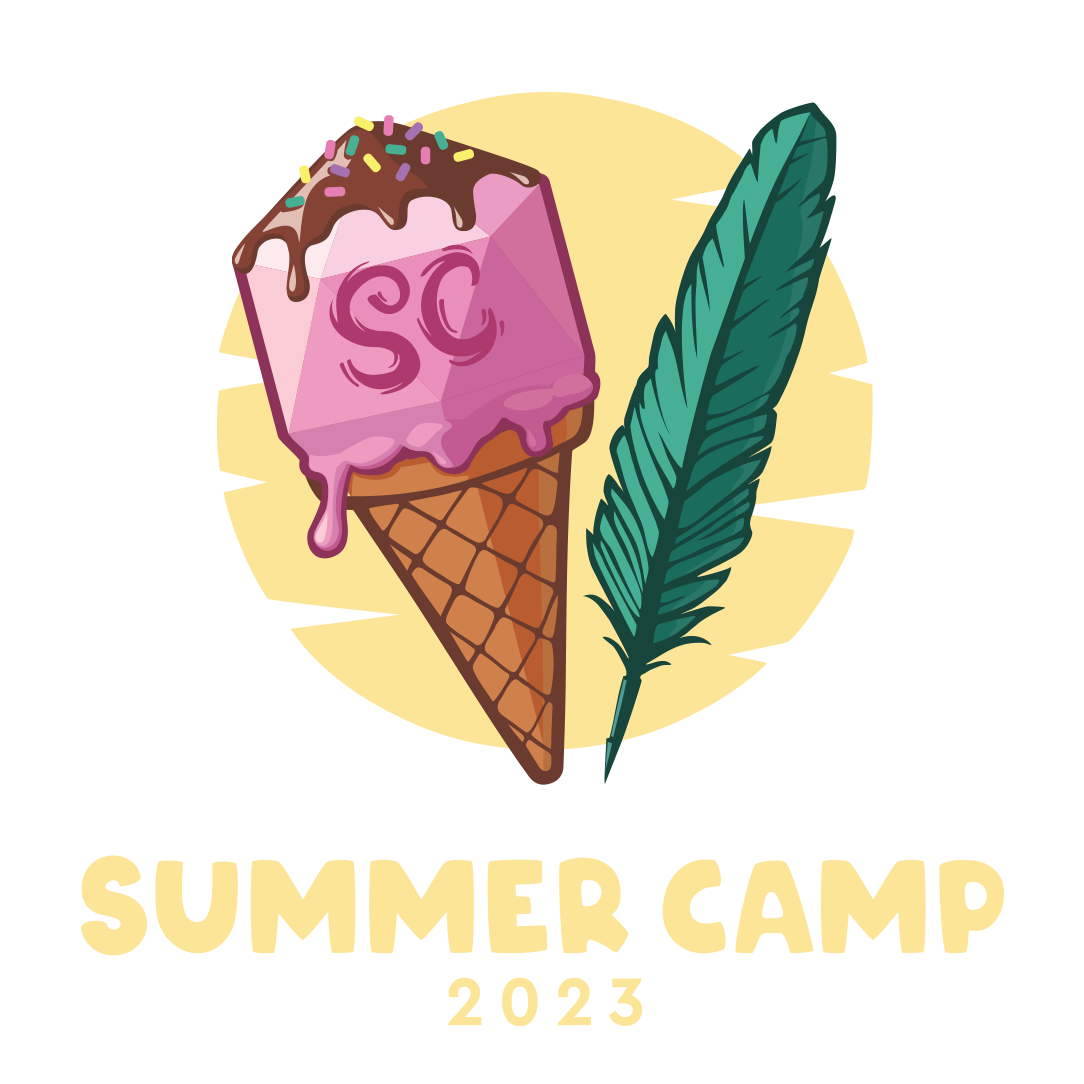Naadam
Every year, the various clans of Khalkh Monggols gather together for an ancient festival celebrated in their brief summer: Naadam. Naadam comes from the word "Naadakh” which means “to have fun". This is an immensely ancient tradition stretching back long before the Erlithmanil even walked Emynea. However, Ylithuum and Rylis were known to attend before losing their bodies, enjoying the mix of tradition and art.
Naadam begins with an elaborate opening ceremony incorporating riders, dancers, magical displays, athletes and musicians. The entire festival is an incredible mix of art and sports. It includes athletic games, singing and dancing, traditional costumes and a performance akin to a parade. The highlight of this festival is the "three manly skills" though women have been known to participate in all but one. These sports are archery, horse racing and wrestling. However, the music and dancing is still a vital element of the festivities and includes the devekh (eagle dance), urtiin duu (long song), morin khuur (horse-head fiddle) and khoomei (throat singing). During this festival, these nomads share their stories, their adventures and come together as a community despite living separately through most of the year.
The wrestling during this festival is a hearty and dramatic affair and by far one of the main events. These wrestlers embody ideals of nobility, strength and chivalrous sportsmanship in their culture and the entire practice has shamanistic roots. There are no weight classes, there is no ring, there is no time limit and the rules are simple. The object of a match is to get an opponent to touch his back, knee or elbow to the ground by using a variety of throws, trips and lifts. Striking, strangling or locking an opponent is illegal as is use of Racial Magic to win. When a wrestler loses the match, he then symbolically passes under the arm of the winner as a sign of respect. Rank can only be attained during the Naadam festival and is determined by the number of rounds won by each wrestler. Before and after the match, each wrestler does the traditional eagle dance which symbolizes power, bravery, grace and invincibility. This dance is performed by one with racial magic granting them the actual features of an eagle at the opening and ending of the competition, a highly respected magic form among the Khalkh Monggol.
Naadam begins with an elaborate opening ceremony incorporating riders, dancers, magical displays, athletes and musicians. The entire festival is an incredible mix of art and sports. It includes athletic games, singing and dancing, traditional costumes and a performance akin to a parade. The highlight of this festival is the "three manly skills" though women have been known to participate in all but one. These sports are archery, horse racing and wrestling. However, the music and dancing is still a vital element of the festivities and includes the devekh (eagle dance), urtiin duu (long song), morin khuur (horse-head fiddle) and khoomei (throat singing). During this festival, these nomads share their stories, their adventures and come together as a community despite living separately through most of the year.
The wrestling during this festival is a hearty and dramatic affair and by far one of the main events. These wrestlers embody ideals of nobility, strength and chivalrous sportsmanship in their culture and the entire practice has shamanistic roots. There are no weight classes, there is no ring, there is no time limit and the rules are simple. The object of a match is to get an opponent to touch his back, knee or elbow to the ground by using a variety of throws, trips and lifts. Striking, strangling or locking an opponent is illegal as is use of Racial Magic to win. When a wrestler loses the match, he then symbolically passes under the arm of the winner as a sign of respect. Rank can only be attained during the Naadam festival and is determined by the number of rounds won by each wrestler. Before and after the match, each wrestler does the traditional eagle dance which symbolizes power, bravery, grace and invincibility. This dance is performed by one with racial magic granting them the actual features of an eagle at the opening and ending of the competition, a highly respected magic form among the Khalkh Monggol.
Execution
Most of the festivities are kicked off by an opening performance akin to a parade. Each clan is given an opportunity to perform, showing off skills, singing, athletics or artistic performances of their choosing to impress their fellow Khalkh Monggols. Even theatrical, mock battles are known to take place. Music, dancing and magic demonstrations are very common showing off what makes their clan special while still respecting their culture and traditions. Their songs are famously heard from miles away. Whether this is their use of Sonildaz magic, khoomei throat singing or the open, rolling landscape is uncertain.
After the opening ceremony, the athletics begin. Various games are held over the course of several days alongside many smaller performances. They even perform plays, reenactments of legendary heroes being passed down mostly to children less invested in the sports. This also includes a form of song called urtiin duu or "long song" in which the singer continues on one long breath as they sing, recounting stories and history. It is a lyrical chant characterized by ornamentation, falsetto, an extremely wide vocal range. The rising melody is slow and some even utilize a mix of Sonildaz and Elbixur magic to invoke emotions in listeners, these elements ordinarily counterpart to the other.
One can generally find musicians playing horse-head fiddles, drums or throat singing intermittently throughout the gathering. Throat singing, or khoomei, has a very unique and memorable sound. More than one tone slides out of one throat and at times even a whistling can be heard. It is sometimes called overtone singing. The whole Tundra almost seems to him and whistle during this event. This is a festivity that brings together groups that don't often get to see each other but have a strong sense of cultural pride and community.
Components and tools
Many participants wear ornate and traditional clothing, even costumes and armor if they are performing. Wrestlers wear a peculiar outfit during their matches—a jodag, shuudag and gutal. The jodag is a tight, collarless, heavy-duty short-sleeved jacket of red or blue color. The front is open and exposes the wrestler’s chest. According to legend, this is because a wrestler once defeated all other combatants before ripping open their jodag to reveal her breasts, showing everyone that she was a woman. From that day, the jodag had to reveal the wrestler's chest. The Shuudag is a small, tight fitting brief of red or blue cotton and are designed to make a wrestler more mobile and prevent opponents from gripping loose pants. Finally, the gutal are high leather boots of traditional style, their toes slightly upturned, often reinforced around the sides with leather strings.
Participants
Interestingly, the racing is not about the rider but showcases the mount themselves. In the past, this competition was reserved purely for horses but, as Khalkh Monggols integrated more complex species into their culture as mounts, they added an extra category to involve any kind of mount from the tundra steppes. However, the primary events still revolve around horses.
This event allows the different clans to show off the breeding and training of their horses, such a critical component of their lifestyle. Winners, or at least those who perform well, are not only lauded for their skill but are more likely to be approached to sell their animals. There is actually quite a bit of bartering as these clans meet up as well. The focus of the race is so much on the horses that the rider is typically a child, present only to direct the horse and slow it down as little as possible. They even forgo shoes so as not to impede or potentially injured the mount. These children will also sing a traditional song before and after racing called giingoo in honor of the horse god khayankhyarvaa (Maralith). These races also have no track, racers running over open fields and hills. There are varying categories which run anywhere between 10-26 km (6-16 miles) depending on the age of the horse.
Archery is a vital skill for these peoples, whether as warriors or hunters. Men, women and even children are allowed to compete. There are three traditional categories, Khalkh, Buriad and Uriankhai which are separated by equipment used and distance of targets. However, they have also added categories involving use of ranged racial magic as well, Iska being the most common. This sport is considered a test of strength, vision, patience and concentration amid the Khalkh Monggols.
Observance
The festival takes place during the brief but vibrant summer of the Tundra Steppes. The ice and snow melts away, signalling the clans to meet. This is generally in July and will last several days if not a week.
Primary Related Location
Related Ethnicities












Comments